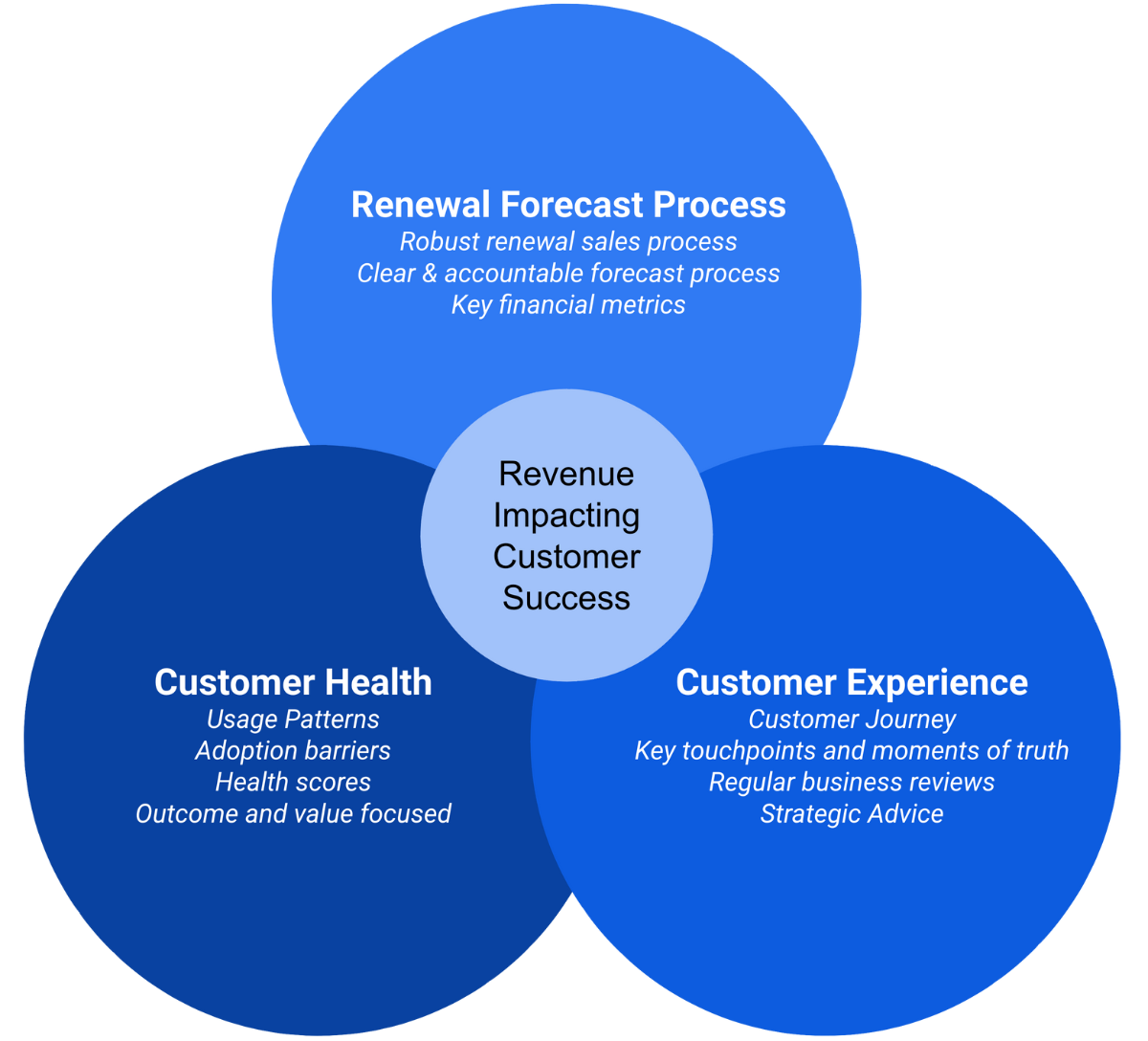The Revenue Blog /
Customer Success: The Biggest Revenue Generator in Your Business
Customer Success: The Biggest Revenue Generator in Your Business

Topics covered in this article
In today's ultra-competitive and fast-paced SaaS landscape, Customer Success (CS) is emerging as a critical driver in maintaining revenue momentum for the business. Gone are the days when CS was merely a support function; it's now a pivotal player in driving business expansion and sustainability.
The Evolving Role of Customer Success
Customer Success has undergone a fundamental transformation, evolving from traditional troubleshooters into strategic revenue generators. This paradigm shift is reshaping organizational structures and priorities across the industry. The days of viewing Customer Success (CS) teams merely as cost centers are over—they've emerged as vital revenue engines driving business growth.
The transformation is particularly visible in how companies measure and value CS contributions. While traditional metrics like health scores and usage statistics remain important, they're now complemented by revenue-focused KPIs centered on renewals and expansions. This shift is forcing deeper collaboration between CS, sales, and marketing teams, breaking down traditional silos.
Perhaps most significantly, CS teams are now harnessing the voice of the customer in unprecedented ways, turning client insights into powerful drivers of strategic growth. They're not just solving problems—they're identifying opportunities, strengthening relationships, and directly contributing to the company's bottom line.
The Three Pillars of Revenue-Impacting Customer Success
To meet these new demands, CS teams need to adopt a value-led, revenue-focused approach. We propose a three-pillar model:
- Customer Experience
- Map the entire customer journey from awareness to advocacy
- Identify key touchpoints and moments of truth
- Conduct regular business reviews and offer strategic advice
- Customer Adoption & Health
- Monitor usage patterns and address adoption barriers
- Implement health scores to predict and prevent churn
- Continuously educate customers on product value
- Defined Renewal Strategy & Execution
- Implement a robust renewal sales process (consider adapting MEDDIC for CS)
- Establish a clear forecast process, combining bottom-up expectations with top-down gut calls
- Track key metrics: Expected renewals, potential downsell/churn, and NRR/GRR impact

Bridging the Gap
There's often an "impedance mismatch" between traditional CS metrics (like customer experience and health) and revenue outcomes. The missing link? A structured approach to securing renewals that orchestrates efforts across CS, Sales, Product, and other teams.
The Way Forward
As CS takes center stage in revenue generation, teams must:
- Adopt revenue forecasting discipline
- Leverage CS metrics in sales processes
- Establish clear collaboration protocols between CS and sales teams
- Implement robust renewal forecasting and tracking
CS teams can revolutionize their role, transitioning from support to revenue driver, by embracing and adapting the proven strategies of their sales colleagues. The future of SaaS belongs to companies that can effectively harness the power of Customer Success as a revenue generator.
About the Author
Jeff SaengerJeff Saenger is the VP of Customer Success at BoostUp where he leads customer success and service strategy. He is a senior executive with a high degree of experience in building, scaling and optimizing high performing global service teams at enterprise B2B SaaS companies.




-Photoroom.png)